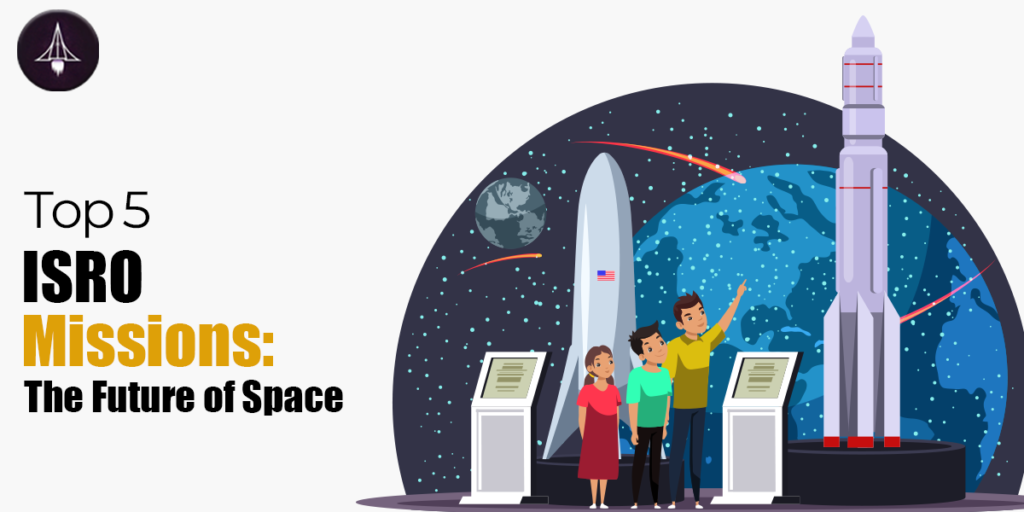As the world turns to look at the stars The Indian Space Research Organization (ISRO) is preparing for a turbulent and changing 2025.
With a set of missions that cover Navigation, Remote sensing, Communications and Defense, ISRO maintains its position as World leader in space exploration. Each mission not only represents a technological leap forward. But it is also a test of ISRO’s determination to face national and global challenges.
“Explore career opportunities In space exploration for Indian students here”
This Blog will cover a summary of the respective To-Do list of ISRO in 2025.

Starting year: NVS-02
The 2025 year begins with the launch of NVS-02 aboard GSLV F15. This navigation satellite will enhance India’s NavIC (Indian Constellation Navigation) system by providing precise positioning services across the country and nearby regions. This is an important moment. This marks ISRO’s 100th mission and strengthens India’s capability to develop GPS-like local navigation infrastructure.
Gaganyaan G1: Prelude to manned space flight
March will witness a major step in India’s manned space ambitions with the launch of the Gaganyaan G1 mission. This unmanned test flight will feature Vyommitra, a humanoid robot designed to imitate the work of astronauts and test important systems. The mission is preparing the field for the historic Gaganyaan manned mission, a dream that will soon launch Indian astronauts into low Earth orbit.
Revealing NISAR: The Miracle of Cooperation
NASA-ISRO’s Synthetic Aperture Radar (NISAR) satellite is a testament to the power of global collaboration and technological innovation. Symbolic of the great collaboration between NASA and ISRO, with an impressive investment of USD 1.5 billion, NISAR incorporates dual frequency (L-band and S-band) radar technology to provide observation and tracking capabilities. advanced world The mission aims to revolutionize our understanding of Earth’s surface changes. It provides important insights into natural hazards such as earthquakes, volcanoes and landslides. At the same time, it contributes to assessing the impacts of climate change and agricultural monitoring. NISAR’s unprecedented features include the largest space-based reflector antenna. Demonstrates cutting-edge engineering advancements This reinforces its status as the most expensive Earth imaging satellite in the world. among scientific objectives The mission highlighted the cultural and diplomatic impact of international cooperation. Promote knowledge sharing and strengthening Indo-US relations as a sign of progress.
NISAR not only addresses environmental challenges such as deforestation and glacier tracking, But it also lays the foundation for future global cooperation in sustainable development and disaster management.
Strengthening communication: IDRSS-01
ISRO’s IDRSS-01 satellite will redefine data transmission capabilities. to ensure perfect communication with space missions In particular, manned spacecraft initiatives Although the exact release date has not yet been announced. But the importance of satellites cannot be overstated to support India’s growing space endeavors.
Expand the scope of trade
ISRO continues to support commercial space investments. BlueBird 6 satellite launch for AST SpaceMobile on the upcoming LVM3 M5 bonfire. It will highlight India’s growing role in supporting satellite launches around the world. Meanwhile, the TDS-01 mission on the PSLV N1 visa is to introduce key advanced technologies for future projects.
Get to know about the Solar Eclipse 2025 here
Remote sensing and national defense
Oceansat-3, planned launch of PSLV C11, will revolutionize India’s ability to monitor ocean phenomena. It helps in maritime resource management and disaster relief. Meanwhile, the Anvesha satellite, developed in collaboration with DRDO, will enhance military surveillance and reconnaissance capabilities. These missions reflect ISRO’s dual commitment to social interests and national security.
Leveraging SSLV for strategic applications
The Parikshit mission will use a Small Satellite Launch Vehicle (SSLV), demonstrating ISRO’s ability to offer economical solutions for smaller payloads. The mission is designed to meet strategic military needs and commercial aspirations.
Looking to the future:
With additional missions such as GISAT-02 and a robust schedule with four GSLV launches, three PSLV missions and one SSLV deployment, ISRO’s 2025 agenda promises tireless activity and exponential success. These missions highlight not only ISRO’s technical capabilities but also its commitment to meeting national and global needs through innovation and collaboration.
A legacy of Excellence
Looking at the 2024 framework, which includes the Aditya L1 solar mission and or INSAT-3DS, ISRO’s trajectory remains bullish. As the organization begins its journey to 2025, it continues its legacy of resiliency. Ambition and an unwavering commitment to exploring new horizons. Each release approaches the stars of India.
To prove that the sky isn’t the limit. Learn what to study to become an astronaut in India.
About Us:
SciAstra is a team of scientists and research scholars from the top research institutes around the world, like Oxford, Harvard, Cambridge, and so on. Our vision is to promote critical thinking and scientific temperament by helping students pursue careers in science.
We offer many free and paid courses where our mentors from the top research institutes like IISER, NISER, IACS, CMI, ISI, IISC Bangalore, etc., teach students in live classes, with study materials, mock tests, books, and everything needed. We have taught more than 10,000 students already since 2021 and achieved over 1000 selections with AIR 1, 7,10, 12, and 13 in IISc Bengaluru, IISERs, NISER, IACS, and so on. If you are looking to prepare for IAT / NEST 2025, you can check out our courses and get access to live classes, recorded lectures, study material, mock tests, doubt-clearing classes, and much more!
To know more about us, click here OR download the SciAstra App from the Play Store and App Store!





